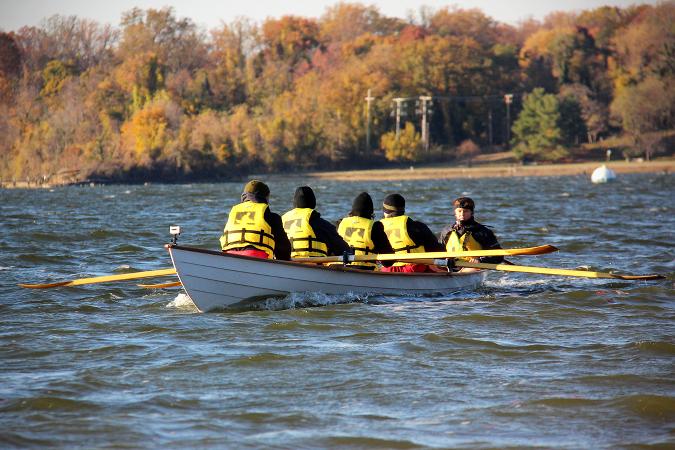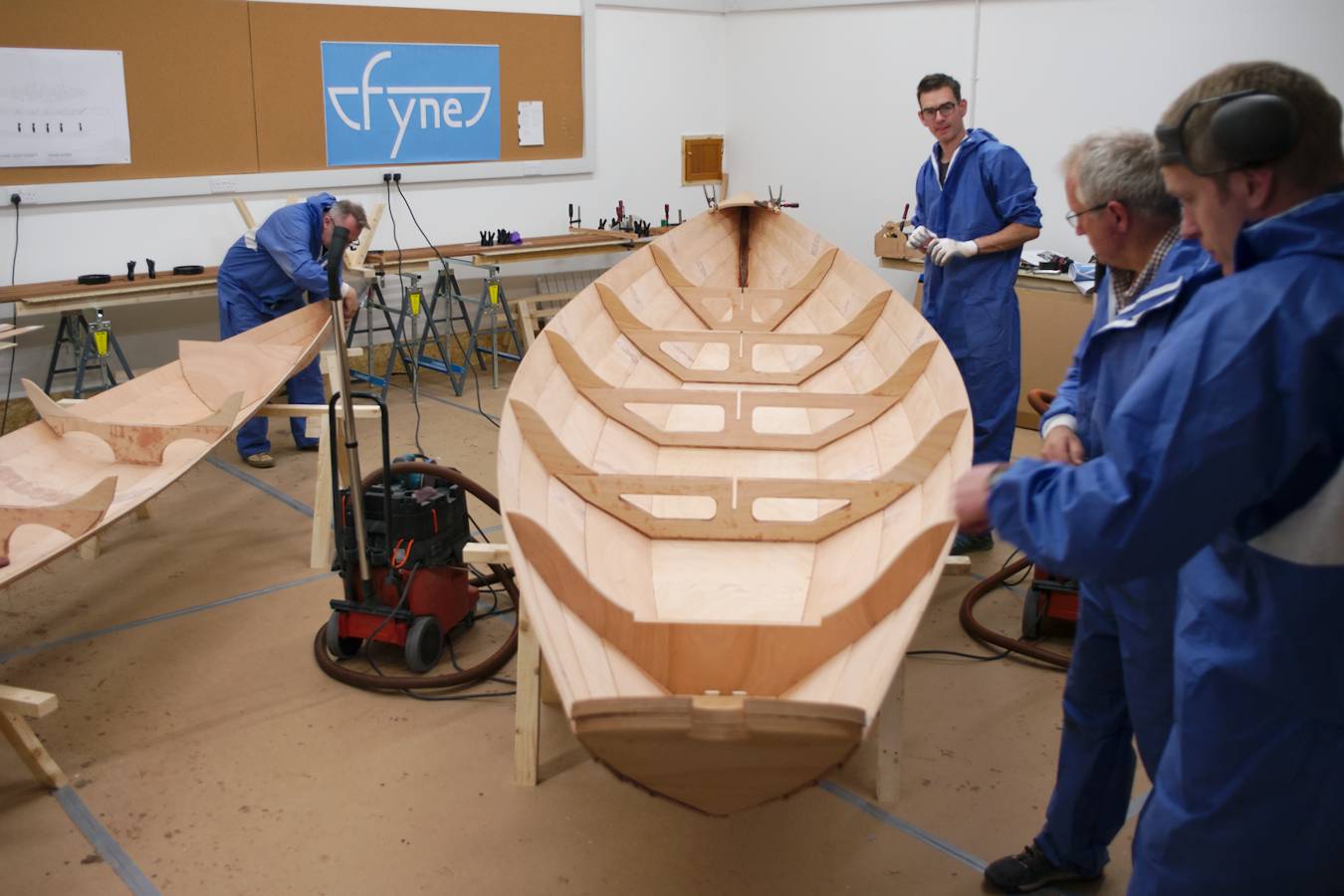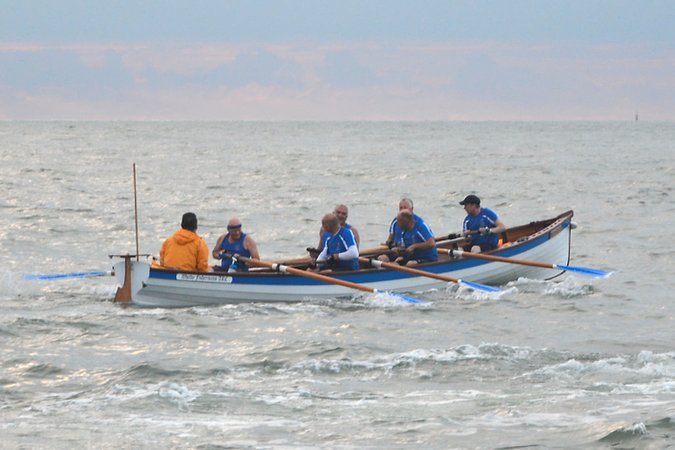













Product Description
The CLC Team Dory is a stable and fast rowing boat for competition and expedition rowing with four sweeps plus room astern for a coxswain.
These multi-oared training craft continue to gain in popularity with youth and adult rowing programmes. Less skill is required to row a wherry-type hull like this compared to a narrow rowing shell and you may safely venture into cold and even rough water.
Six knots was easy without trying very hard. Sprint speed is around eight knots. Everyone aboard agreed that we should try a big crossing as soon as possible. It was choppy but the boat is very dry, another good feature of the traditional dory shape. The high bow with plenty of volume lifts nicely over waves.
John Harris, designer
Most boats of this ilk are difficult and expensive to build, but a team of volunteers can build the Team Dory hull in about 50 hours, plus another two or three weeks of part-time sanding and finishing. Total build time is 120-150 hours. The ease of construction and relatively low cost provide a low barrier to entry. It would be plausible to build one of these a month and have a fleet of them very quickly, ready for competition, training, or adventure. Epoxy coating, strategically reinforced with fibreglass, keeps maintenance near zero.
The Team Dory enjoys all of the refinements that make its smaller sister, the Northeaster Dory, so easy to build. All of the parts are computer cut, the hull is assembled with our rapid LapStitch™ method, bulkheads are mortised in place and stitching holes are pre-drilled. The tight kit combined with stitch-and-glue construction makes this kit uniquely accessible to amateur teams and youth groups.
The seats are designed for efficient rowing with a range of different crew heights, from about 5′6″ to 6′6″. Instead of adjustable footbraces, the rowers brace their feet against the forward face of the seat in front of them. Taller people simply sit further back on the broad seats.
Beneath each seat is a buoyant tank, something that is usually missing from these gig-type rowing craft. The tanks average about 175 pounds of positive buoyancy each, allowing the boat to be recovered and bailed unassisted, although the boat seems to have excellent manners in waves and is a good match for conditions on rivers, bays and alongshore. The flotation chambers also give the hull a lot of stiffness and a small amount of waterproof storage (bulky gear for expeditions could be carried in waterproof bags).
Speeds range from 5-8 knots depending on crew skill and conditions. After some experimentation, 10′6″ sweeps seem like the best fit for the boat. The kit includes full-sized templates and instructions for building your own, or you can re-purpose sweeps or sculls from rowing shells.
The hull weighs about 210 pounds; easily carried by the crew of five. It could be car-topped on a heavy truck, but the lightest of trailers is sufficient. The payload is about 1000 lb.
The kit includes:
- Pre-cut wooden panels with pre-cut joints, pre-drilled tie holes and panel location marks
- Solid wood parts
- Epoxy resin and activator
- Epoxy fillers
- Copper ties
- Woven glass fabric
- Woven glass tape
- Four pairs of silicon bronze rowlocks and sockets
- Comprehensive building manual
- Free technical support from a competent builder
- Full-size templates and instruction manual for making your own 10′ 6″ oars
PDF Study manual
The construction manual for the boat is also available as a PDF download. After credit card authorisation a download link will be sent to the email address put on the order form.
This is intended for pre-build study or to help with the decision to purchase. Reading this manual will help you decide whether or not you can build the boat. It is the manual that accompanies the kits. It describes all of the techniques that will be used during the building and also a step by step guide to construction. Scale drawings are used throughout as well as photographs of critical jobs.
If, later, you decide to purchase the kit the cost of this printed manual will be deducted from the kit price.
This manual does not contain the plans of the panels with the cutting instructions so it is not possible to build the boat from scratch using only this manual.
PDF study plans
These study plans are intended to give you an overview of the construction of the boat. They are in PDF format that can be viewed using Adobe Reader. There are two pages and they measure 279 × 216 mm (11″ × 8½″). They can be printed for carrying around.
After credit card authorisation the plans will be sent to the email address put on the order form.






